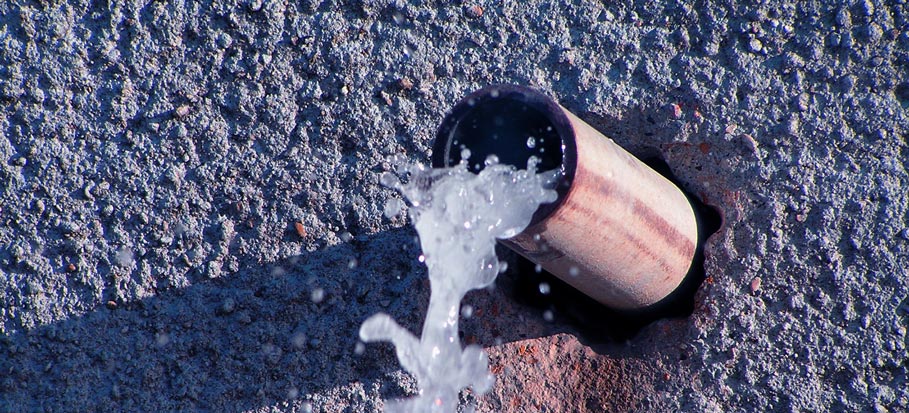How to Examine If Your House Has a Concealed Leak
How to Examine If Your House Has a Concealed Leak
Blog Article
Almost everyone has their own individual assumption in relation to Detecting hidden plumbing leaks.

Early discovery of dripping water lines can mitigate a possible calamity. Besides saving you money, it will certainly lessen the aggravation as well as aggravation. The minute you locate a leakage, calling your plumber for repairs is the best solution. Some tiny water leakages might not be visible. If you can not discover it with your nude eyes, below are some hacks that aid.
1. Check Out the Water Meter
Every house has a water meter. Examining it is a surefire manner in which helps you uncover leakages. For beginners, switch off all the water sources. Ensure no one will flush, utilize the faucet, shower, run the washing device or dishwashing machine. From there, go to the meter and watch if it will change. Because nobody is using it, there ought to be no motions. That suggests a fast-moving leakage if it moves. Similarly, if you spot no changes, wait an hour or more and also check back once again. This suggests you might have a slow-moving leak that might also be underground.
2. Inspect Water Consumption
Analyze your water costs as well as track your water consumption. As the one paying it, you must notice if there are any kind of inconsistencies. If you identify sudden changes, despite your intake being the same, it indicates that you have leaks in your plumbing system. Keep in mind, your water bill should fall under the exact same variety every month. An unexpected spike in your costs suggests a fast-moving leak.
Meanwhile, a steady increase each month, even with the very same practices, reveals you have a sluggish leakage that's likewise gradually intensifying. Call a plumber to thoroughly examine your building, specifically if you really feel a cozy location on your floor with piping beneath.
3. Do a Food Coloring Test
When it concerns water consumption, 30% originates from commodes. Examination to see if they are running appropriately. Decrease flecks of food shade in the tank and wait 10 mins. There's a leakage between the tank and bowl if the color somehow infiltrates your dish throughout that time without flushing.
4. Asses Exterior Lines
Do not neglect to check your exterior water lines also. Should water leak out of the connection, you have a loosened rubber gasket. One small leak can lose tons of water and also surge your water expense.
5. Examine the scenario and also evaluate
House owners should make it a behavior to inspect under the sink counters and also inside cabinets for any kind of bad odor or mold development. These 2 warnings show a leak so punctual focus is called for. Doing regular assessments, also bi-annually, can save you from a significant issue.
Examine for stainings and weakening as many pipes as well as home appliances have a life span. If you think dripping water lines in your plumbing system, do not wait for it to intensify.
Early discovery of dripping water lines can alleviate a prospective calamity. Some small water leakages may not be visible. Inspecting it is a surefire way that aids you find leaks. One small leakage can waste loads of water and also surge your water expense.
If you think leaking water lines in your plumbing system, do not wait for it to intensify.
How to Know If Your Home Has a Hidden Leak
Water Meter Reveals Inexplicable Water Usage
If you’d like to test whether or not there’s a leak somewhere in your home, you can do this using your water meter. Here is how to conduct the test:
Don’t use any water in your home for at least 30 minutes; this also means not turning on faucets or water-using appliances.
Go outside, and check your water meter for activity.
If your water meter shows that there was activity, even though no one was using any water, this proves that there is a leak in your home.Visible Mold or Mildew Growth
Leaks behind walls create moist, dark environments that allow mold and mildew to grow and thrive. Eventually, you might see mold growth forming on the wall closest to a hidden leak.
If mold is growing in an area that receives a high amount of moisture, such as a bathroom, it may simply be an indication that better ventilation is needed. However, if you see mold growth on a wall or the ceiling in an area where you would not expect, you probably have a hidden leak.
Musty, Mildew Odor
Sometimes you might not be able to see the mold or mildew that is growing as a result of a leak. However, the smell can give the problem away just as easily. If you catch a whiff of something musty, there’s a good chance that old water is collecting somewhere in your home that you can’t see.
Stained/Warped Walls, Ceilings, or Floors
When your home soaks up water, a variety of red flags can become visible, including ceiling stains, bubbling drywall, warped walls, and sagging floors. While these issues can be caused by excess humidity, they can also be signs that a pipe or plumbing connection has started leaking behind your walls.
Inexplicably High Water Bill
After a while, you get a general sense for what your water bill should be. If you own a pool or sprinkler system, your bill will tend to be higher during summer. However, if you receive a water bill that seems especially high, and you can’t figure out what caused it, then you may have a hidden leak somewhere that’s increasing your bill.
https://www.plumbingjoint.com/blog/2019/july/how-to-know-if-your-home-has-a-hidden-leak/

I ran across that article on Locating water leaks while doing a lookup on the search engines. So long as you appreciated our post plz be sure to pass it around. Thank you for your time. Visit again soon.
Report this page